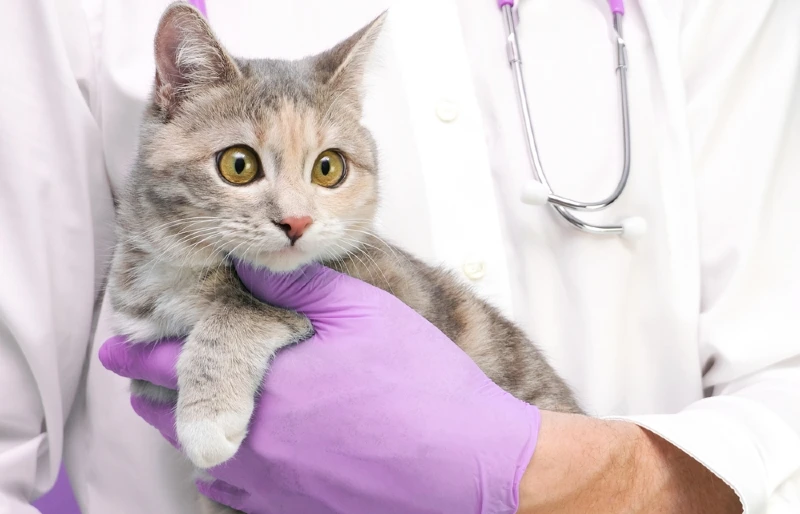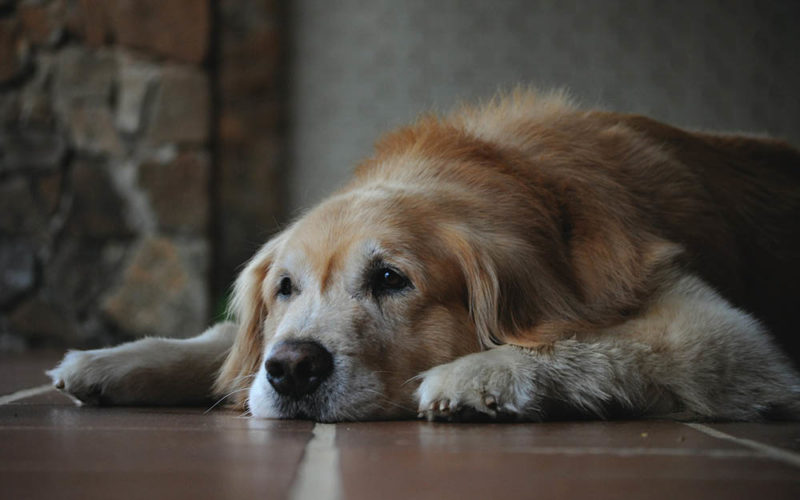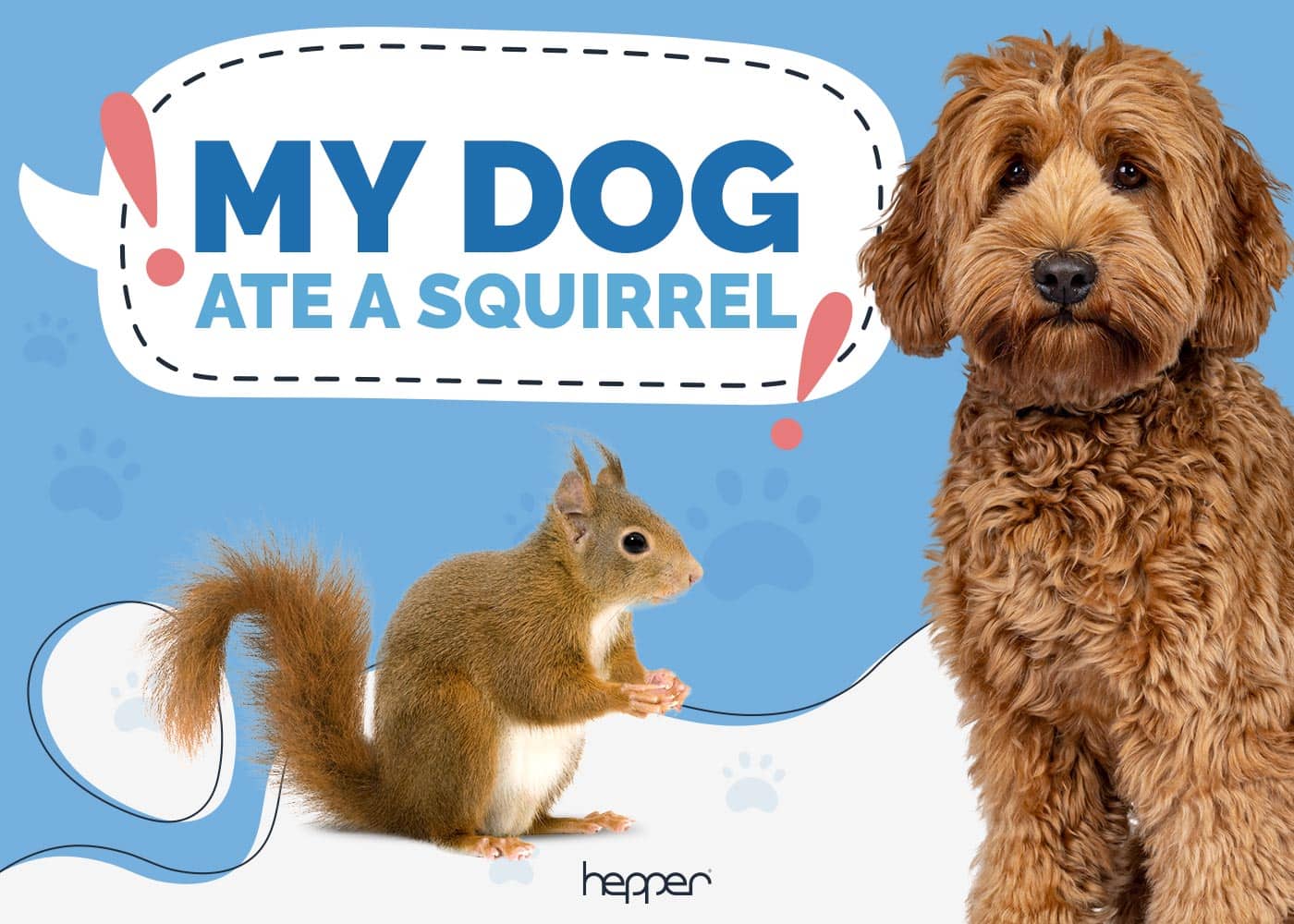When Do Kittens Lose Their Baby Teeth? Dental Facts & FAQ (Vet Answer)

Updated on
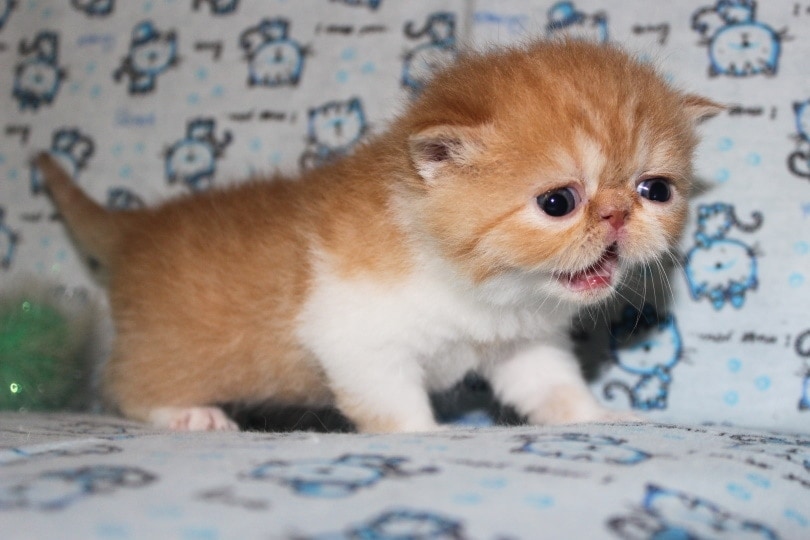
Most pet parents take their new kitten home at 8 or 9 weeks old. By that age their new pet has a full set of baby teeth, pointy little gnashers that are surprisingly sharp, as most kitten parents can testify! Along with the kitten’s overall growth and development throughout the next few months (from 11 to 12 weeks onward), their teeth also change, from the loss of baby teeth to the emergence of a full set of adult teeth.
 Initial Teething in a Kitten
Initial Teething in a Kitten
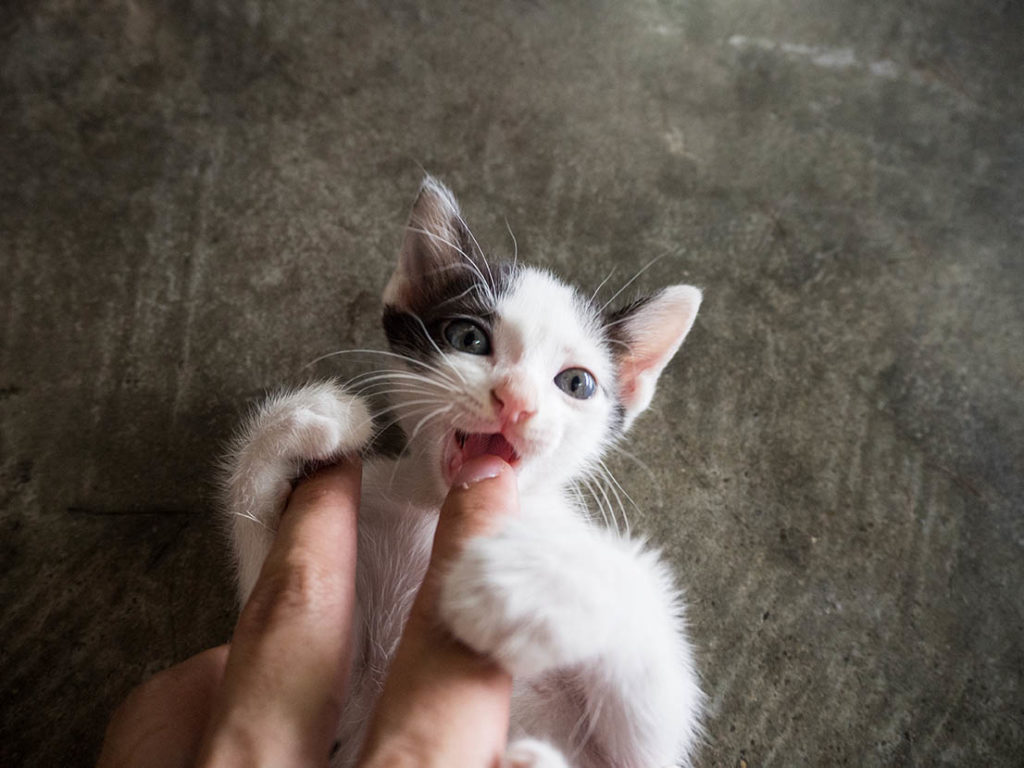
Unless a kitten has been born at home most pet parents do not witness the initial teething stage of their life, which results in a new set of baby teeth, otherwise known as milk or deciduous teeth. Newborn kittens arrive with a gummy bite, which is a definite benefit to their nursing mothers! At around 3 weeks of age, teething begins as your kitten’s baby teeth start to break through the gum. During this process he or she might experience some discomfort, which may change their eating habits and cause them to produce excess saliva, and have temporarily inflamed gums.
They can become a bit irritable and experience the urge to chew things, although typically not as much as puppies do during teething. But it is probably still worth providing them with toys to chew on if they are in your care at that point in their life. Now that her babies have little needle-like teeth this likely helps promote weaning too as it becomes more uncomfortable for the mother cat to suckle her kittens!
By 6 to 8 weeks of age this process is usually complete, and your kitten will have a full set of 26 baby teeth. These teeth are smaller, and finer, than their adult teeth will ultimately be.
Loss of Baby Teeth and the Emergence of Adult Teeth
The next stage of teething in kittens is the replacement of the 26 baby teeth with a full complement of 30 adult teeth. Again, as with the initial emergence of the baby teeth, there can be some discomfort associated with this. From 11 to 12 weeks onward kittens will begin losing their baby teeth, and from the age of 3 1/2 to 4 months, the adult teeth start to erupt through the gums, replacing the baby teeth.
Most kittens will have lost all their baby teeth by 3 to 4 months of age. The adult teeth that replace them will have developed and grown beneath the baby teeth. Of the adult teeth the incisors are usually the first to break through through the gum, then the canines, followed by the premolars, and finally the molars. These teeth have roots that remain in the jaw, and as they appear at the surface of the gums the associated baby teeth should either have fallen out already or fall out as they arrive.
By 6 to 7 months of age the baby teeth have usually been entirely replaced by a full set of adult teeth.
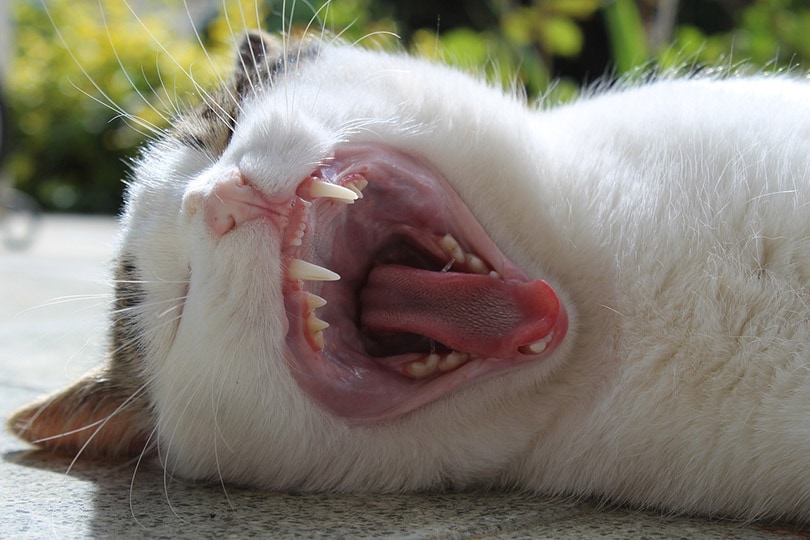
Do Kittens Swallow Their Baby Teeth?
The answer to this question is yes, kittens do swallow their baby teeth! Occasionally, they can also be found in the kitten’s environment when they fall out of their mouths, but it is often the case that your kitten will just unknowingly swallow them as they loosen in the mouth, especially if they are eating at the time. This is not anything to be concerned about and is a natural process.
Persistent Baby Teeth
Occasionally the baby tooth doesn’t fall out at all, and your kitten ends up with a tooth double, whereby the milk tooth remains alongside its adult counterpart. The chance of this occurring varies with tooth type. Upper canines rank highest for the likelihood of this happening, followed by lower canines, then incisors, and lastly premolars.
These persistent teeth can cause significant problems in the mouth. The adult tooth will not have its intended space available and so may be misaligned. It can affect your cat’s bite if the remaining baby tooth is hindering the adult tooth from fitting into its allocated slot in the mouth. This can lead to pain if the tooth ends up rubbing against the gum where it isn’t designed to rub and can also affect how the upper and lower teeth interact with each other when the jaw is opening and closing.
Food and debris are also more likely to get caught between two closely aligned teeth, and consequently, both dental and gum disease can develop, which ultimately can lead to tooth, and sometimes, bone loss.
Therefore, it is usually advisable to remove retained baby teeth. In a lot of young cats, neutering takes place around the 6-month mark; this is a good time to also remove any offending persistent baby teeth without having to put your pet through a separate general anesthetic. Removing retained baby teeth is usually a relatively quick procedure and so doesn’t increase the time they are under anesthetic too significantly. X-rays can be taken at the same time, if necessary, to ensure that the entire root has been removed.
 Veterinary Examinations
Veterinary Examinations
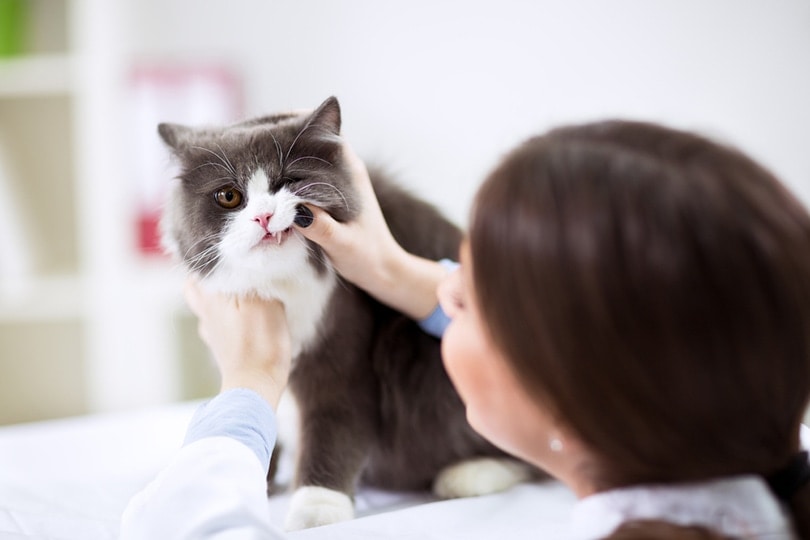
During the first few months of their life, your kitten is usually seen at least twice by your veterinarian when they are receiving their primary vaccination course. On being presented for his or her primary vaccination course your veterinarian will carry out a complete and thorough physical examination of your new charge, including an assessment of the mouth. Any abnormalities in tooth development will be noted at this time, and a follow-up examination scheduled if indicated.
At some clinics, kittens are seen at regular intervals after the primary vaccination course when they are receiving preventative parasitic treatment. Again, this is a good opportunity to have your growing kitten’s tooth and mouth development monitored and evaluated by a veterinary professional.
Cats’ Teeth and Their Lifestyle
Cats, being dedicated carnivores, have teeth designed to reflect this. Grinding surfaces do not really exist in a cat’s mouth; instead, these are teeth that shred and tear meat. Along with their stealth, speed, claws, and generally heightened senses, cats are natural hunters, despite domestication.
Adult cats have four different types of teeth in their mouth, with their combined shapes and functions optimized for a cat’s diet and lifestyle. Incisors at the front of the mouth act to shear meat and are also used to help grip prey. Incisors in cats are quite small and canine teeth comparatively large. Canines are fang-like teeth, again located at the front of the mouth, that grip meat and shred it. With live prey, these are the teeth that kill.
The other two types of teeth are premolars and molars. Premolars are generally used for shearing. There are only four molars present in the adult set of teeth, on each side, both upper and lower. Cats have no baby molar teeth. This is in keeping with their meat-based diet, as molars are generally used for grinding. Alongside their obvious functions of eating and hunting, cats and kittens also use their teeth for grooming and self-defense.
What Are Teeth Composed Of?
Although your kitten’s teeth have different shapes depending on their type, they are all composed of the same basic tissues. The surface of the tooth above the gum line, the crown, is covered in enamel while the surface of the tooth below the gum line is covered in cementum, with the bulk of the tooth being composed of dentine. There is an inner pulp that contains the nerve, blood vessels, and lymph vessels. Teeth have a variable number of roots depending on the type. The periodontal ligament, attached to the cementum, is between each tooth and its socket within the bone.
How Should You Take Care of Your Kitten’s Teeth?
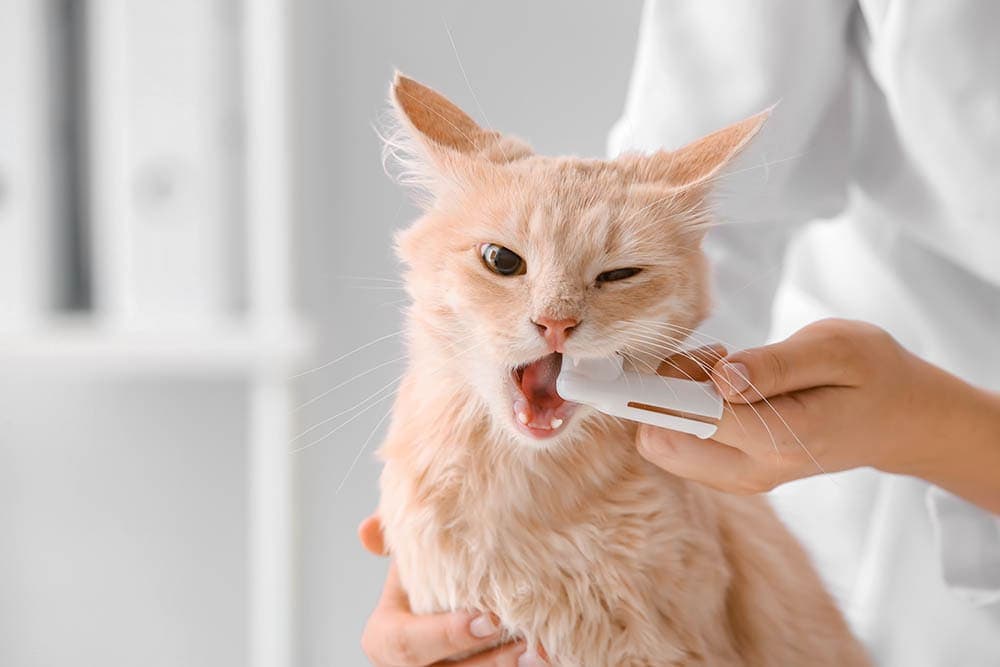
It is good to start taking care of your kitten’s teeth from a young age, prevention being better than cure. Brushing his or her teeth regularly will aid in removing any remaining food or debris. It has the added benefit that your kitten gets used to having their mouth looked at and makes your veterinarian’s job easier! Cat and kitten toothbrushes and toothpastes are available, and your veterinary clinic will usually be very happy to educate you on brushing techniques and oral care in general. Ordinarily, hard food is recommended over soft food, but always take your veterinarian’s advice on what is best for your kitten.
Baby Teeth to Adult Teeth
Baby teeth in a kitten have a short life span and you may be unaware of their loss and the subsequent emergence of adult teeth. In most kittens, the replacement of baby teeth by adult teeth is a smooth process, taking place alongside the rest of their growth and development into adult cats. If you have any concerns during your kitten’s teething phase it is advisable to consult your veterinarian.
See also:
Featured Image Credit: Daisy Heart, Shutterstock
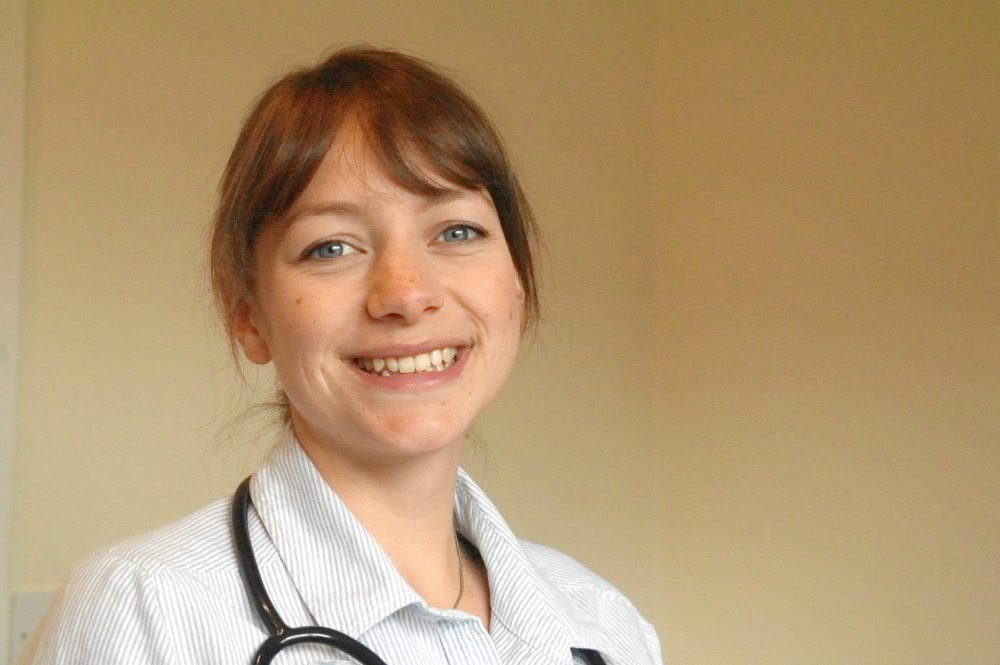
 Initial Teething in a Kitten
Initial Teething in a Kitten
